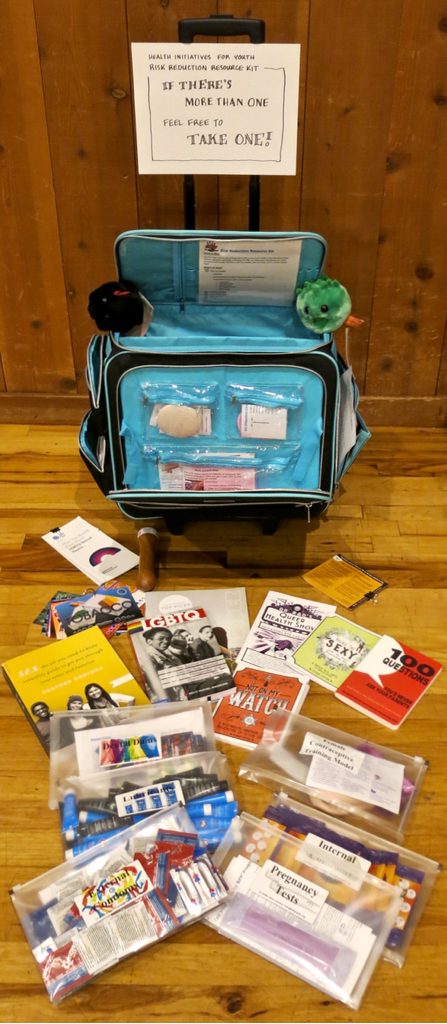This post has been superseded by a new post on Thygeson which contains substantial additional research.
An advocate for woman suffrage, and an early birth control activist, Sylvie Grace Thompson was born June 27, 1868, in the small town of Forreston, in central Illinois. Progressive activism had a long history in her family: her name “Sylvie,” a French name, came from a girl that her father had met when he was a boy; his parents were active with the Underground Railroad, and this girl was one of a family of fugitive slaves escaping from Louisiana.
Her family had no religion, and was the only family in town that were atheists. When interviewed at age 104, she stated that she had never had any religion, though as we shall see she associated for a brief time with a Unitarian church.
She entered high school at age twelve and graduated at sixteen, then taught in a country school for a month until her father died; thereupon she went to live with an uncle who lived in St. Louis, Mo. She worked for her uncle, an appellate judge, as a stenographer. She later recalled that time in St. Louis as a broadening experience, one that made up in part for her family’s inability to send her to college. After two years in St. Louis, she rejoined her mother and younger siblings, who were then living in St. Paul, Minn.
She married Nels Marcus Thygeson, a lawyer, in 1891. They had children including Ruth Adelaide (b. April 9, 1895, Minn.), Elling Henry McKee (b. Feb. 26, 1898, Minn.), Phillips Baker (b. March 28, 1903, Minn.), and Mary Ellen Baker (b. May 26, 1906, Minn.).
While living in St. Paul, Sylvie became active both in the suffrage and birth control movements. Her suffrage work in St. Paul was centered in the Women’s Welfare League, of which she was the First Vice President. The Women’s Welfare League also financially supported birth control efforts. Around 1915, working with two other women, Sylvie started a birth control clinic in St. Paul. Margaret Sanger came to speak to them, and they found two (male) physicians to work with them, to actually provide the “birth control instruments.” Birth control was illegal, so while they arranged public lectures on the topic, actually providing birth control was done in secret, relying on word-of-mouth referrals.
In 1917, Nels died after a long fight with cancer, upon which Sylvie and her four children moved to Palo Alto — after a brief stop in Old Orchard, Maine — so the children could attend Stanford Univ. By 1920, Sylvia was widowed and living with Elling, Phillips, and Mary in Palo Alto; Sylvie gave her occupation as “none”; Nels’ death apparently did not cause her financial hardship. In Palo Alto, Sylvie was active with the Women’s International League for Peace and Freedom (WILF) — as were Annie Tait and Marion Alderton, who were both members of the Unitarian Church of Palo Alto, and may have introduced her to church.
Sylvie was listed in the 1919 parish directory of the Unitarian Church of Palo Alto with her daughter Ruth, and Sylvie appeared on the 1920 membership list. This church would have been a good fit for her; the young adult group called themselves the Humanist Club, and there were many other pacifists and advocates for women’s rights in the church. However, Sylvie’s name was crossed out in the 1921 revision. Fellow pacifists Marion Alderton and Alice Locke Park resigned from the church in June, 1920, in protest against “the attitude taken” by the church in the First World War; Sylvie left the church at about the same time, perhaps for the same reason.
In 1925, Sylvie was still living in Palo Alto with Elling, Mary, and Phillips; Ruth had married in 1918, and had moved to San Francisco with her husband. Mary was the last to finish her studies at Stanford, receiving her degree in 1928, and she and Sylvie were still in Palo Alto in that year. After that, Sylvie moved to Los Angeles. In 1930, she was living there with her mother, her son Elling, a brother and other relatives. In 1940, she was still in Los Angeles, now living with her mother and two brothers. While in Los Angeles, she continued her social activism, and was a member of the Anti-Nazi League. Her mother died in May, 1946. Sylvie returned to Palo Alto in 1955.
Late in life, she expressed her world view as being based on the theory of evolution. She died in San Mateo County, Calif., in 1975, at age 107. At her request, there was no funeral service.
Though she was a Unitarian for only a couple of years, given her strong commitment to women’s rights and her commitment to women’s access to birth control, we should be proud that this freethinker and atheist was willing to affiliate with a Unitarian church for even that brief time.
Notes: 1870, 1880, 1900, 1910, 1920, 1930, 1940 U.S. Census; 1895, 1905 Minnesota State Census; Feminist History Research Project, interviews conducted by Ralda Sullivan, and Sherna Gluck and Mary Shepardson, “Sylvie Grace Thompson Thygeson: In the Parlor,” The Suffragists: From Tea Parties to Prison, Berkeley: Univ. of Calif., 1975; Directory of Palo Alto, Mayfield, Stanford Univ., Ravenswood, and East Palo Alto, Palo Alto: Willis Hall, 1925; New York, New York Passenger and Crew Lists, 1909, 1925-1957, S. S. Majestic sailing from Cherbourg, May 2, 1928; Obituary, Mary Ellen Thompson, Los Angeles Times, May 13, 1946, p. 8; California Death Index.

